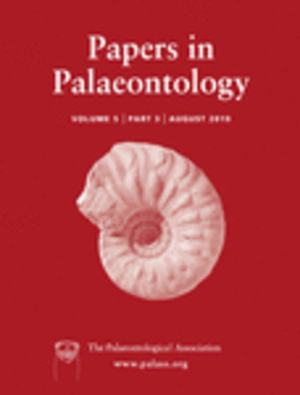Reg. Charity No. 1168330

Well‐developed muscle scars and associated thickened myostracum preserved in the umbones of phosphatized Gnesioceramus anglicus (Woods) provide insights into the palaeobiology of the Inoceramidae. Deeply anchored pedo‐byssal (anterior and posterior) and gill retractor muscle scars are identified amongst the umbonal scars. Comparison with modern bivalves indicates that the remainder of the umbonal scars, and other deeply incised muscle scars around the pallial line in G. anglicus were attachment sites for mantle muscles that were used to aid soft‐part manipulation. Unusually thick umbonal pallial myostracum in G. anglicus, comprising stacked growth increments, indicates that the mantle musculature was well developed and strongly anchored, and therefore that inoceramid soft tissues represented a significant body mass. This suggests that the complex gill, with unusual number of filament components per plica, observed in gigantiform inoceramids, may have also been present in moderate‐sized species of the family. The muscle scars observed in G. anglicus and Actinoceramus concentricus (Parkinson) are found in several extant families within the Pteriomorphia, notably Isognomonidae and Pteriidae, further strengthening the argument for their place in this infraclass. More specifically this is additional evidence for the Inoceramidae being part of the Ostreida. However, the muscle scar organization observed in this study does not provide further evidence in the conundrum that is the superfamily affiliations of this family.